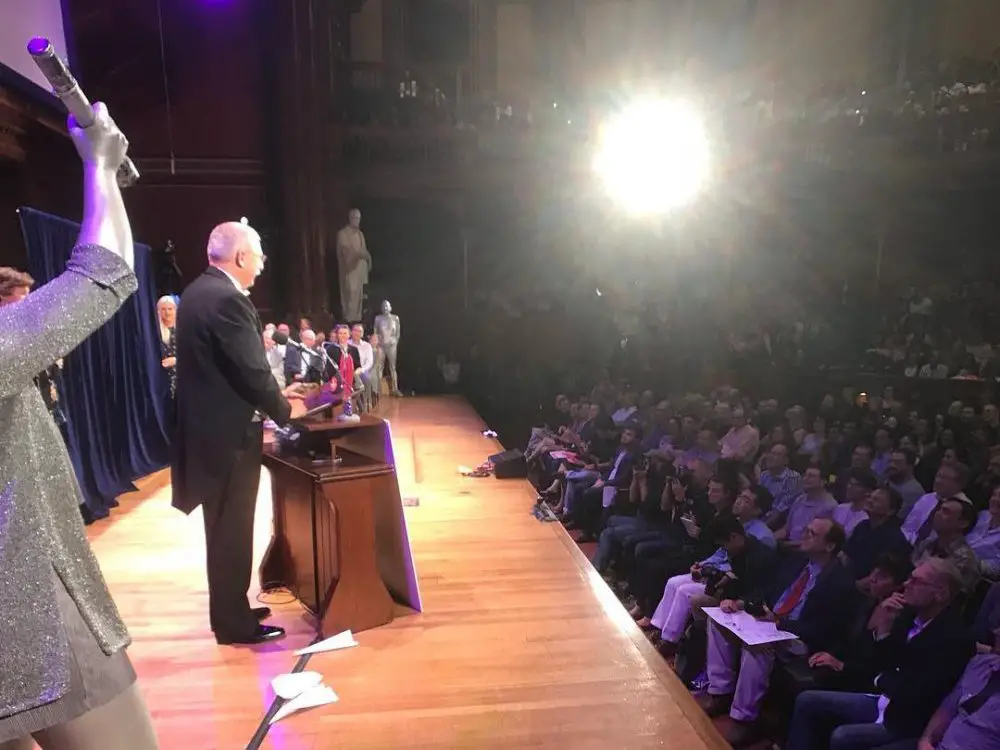In 1994, an Arizona man received an award for trying to treat a rattlesnake bite with an electric shock generated by a moving vehicle. In 2001, an Australian man collected an award for somehow successfully patenting the wheel. These awards were Ig Nobel prizes, satirical awards meant to parody the more famous and legitimate Nobel Prizes. The Ig Nobel prize ceremony was created by Marc Abrahams, an American journalist and editor who specializes in creating content that makes people laugh. The Ig Nobel prize ceremony is held annually at Harvard University and the prizes are distributed by genuine Nobel laureates against a backdrop of running gags. Abrahams serves as the master of ceremonies every year and makes sure that each prize that’s distributed will “make people laugh, and then make them think.”
Even a global pandemic couldn’t stop the absurdity of the Ig Nobel prizes. In 2020, the ceremony was performed online so that the fun could continue and all the participants could stay safe. The upcoming Ig Nobel ceremony in September will be held in a similar format.
Notable Awards and the Philosophy Behind Them
As of 2020, there have been nearly 300 Ig Nobel prizes awarded and they range from confusing to hilarious. There are about 10 prizes awarded annually, though the categories change depending on what events and oddities occurred during the year.
Although there are a few prizes awarded to those who do stupid or dangerous things — like the man who tried to treat a rattlesnake bite with impromptu electroshock therapy — many Ig Nobel prizes are awarded because of sheer inanity. For example, the 1996 Ig Nobel Prize in art went to Don Featherstone, the inventor of the famous pink lawn flamingo. In 1993, The Ig Nobel Prize in literature went to a group of 976 researchers who co-authored a paper that had one hundred times as many authors as the paper had pages. In 2015, another group of scientists received the Ig Nobel Prize in chemistry for developing a chemical that could partially un-boil an egg. Now, this is an impressive feat of chemistry, but it begs the question: What do you do with a partially un-boiled egg?
As amusing as all these studies are, many of the Ig Noble prizes have something substantial behind them. For example, the 2015 prize for physiology and etymology was awarded to Justin Schmidt for subjecting himself to over a dozen of the world’s most painful insect stings. On the surface, this seems like another example of someone doing something stupid in the name of science, but the resulting Schmidt Pain Index is now a useful and common tool used by other etymologists studying and describing venom and pain. The Pain Index has its limitations, mainly because not enough people want to repeat Schmidt’s methodology, but it still contains the best descriptions of insect stings to date.
Another crown jewel of the awards was the 2003 Ig Noble Peace Prize, which was awarded to an Indian man named Lal Bihari who lived a healthy life years after he had been declared officially dead. This too sounds like just another piece of weirdness, but Bihari’s story has much more beneath the surface. Bihari was declared officially dead after a vindictive uncle bribed a government official to file the required paperwork. Bihari found himself unable to do his banking, buy property or do anything else that required paperwork, since dead people usually don’t have to worry about that sort of thing. For some reason, being legally reinstated as alive was a long and lengthy legal process, even though he was living and breathing right in front of everyone.
Bihari went on a campaign to reclaim his life and drew attention to himself by running in elections and staging a mock funeral for himself. It turned out that Bihari wasn’t the only one stuck in this situation, so he created the Association of Dead People, which he intended to become a pressure group to reinstate the rights of those who had been wrongfully filed as dead. Bihari has since been reinstated as alive and a movie about his life and legal “death” came out in India early in 2021. Yes, Bihari won the Ig Nobel Peace Prize for his bizarre story, but also because he drew attention to a legal issue and invited viewers to question even the most basic laws that shape world governments.
One of the most famous Ig Nobel laureates is Andre Geim, a Dutch-British scientist who, with another scientist, won the Ig Nobel Prize in physics for using magnetism to levitate a live frog in 2000. This is strange, yes, but it took an incredible amount of physics prowess. Ten years later, Geim won a true Nobel Prize in physics for his work with graphene, a lattice-like structure made from carbon atoms. So, the Ig Nobel ceremony can contain little nuggets of genius, even when they’re accompanied by a floating frog.
How To Enjoy the Next Ignoble Prize Ceremony
Although the time hasn’t been announced yet, the 31st Annual Ig Nobel Prize Ceremony will be held on Thursday, Sept. 9 and can be viewed through a live broadcast on YouTube. The ceremony will also be recorded by National Public Radio, which will not only broadcast the ceremony live but also rebroadcast it on the Friday after Thanksgiving for anyone who missed it. For anyone who wants to watch or listen to past ceremonies, the last 20 are recorded and available to watch on the Improbable Research YouTube channel. Thankfully, most of the oddities documented by the Ig Nobel ceremony is available for anyone to enjoy for free.
The Ig Nobel Prize ceremony is meant to entertain. It’s supposed to make people laugh and celebrate all the bizarre things that this strange, strange world can produce. However, there’s also the occasional nugget of depth behind all the eccentricity, and considering that it costs $0 to enjoy, the Ig Nobel Prize is worth checking out.

















